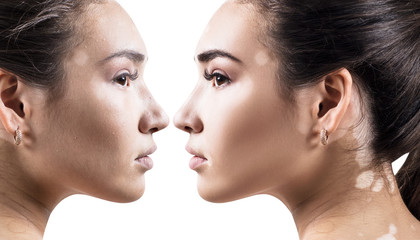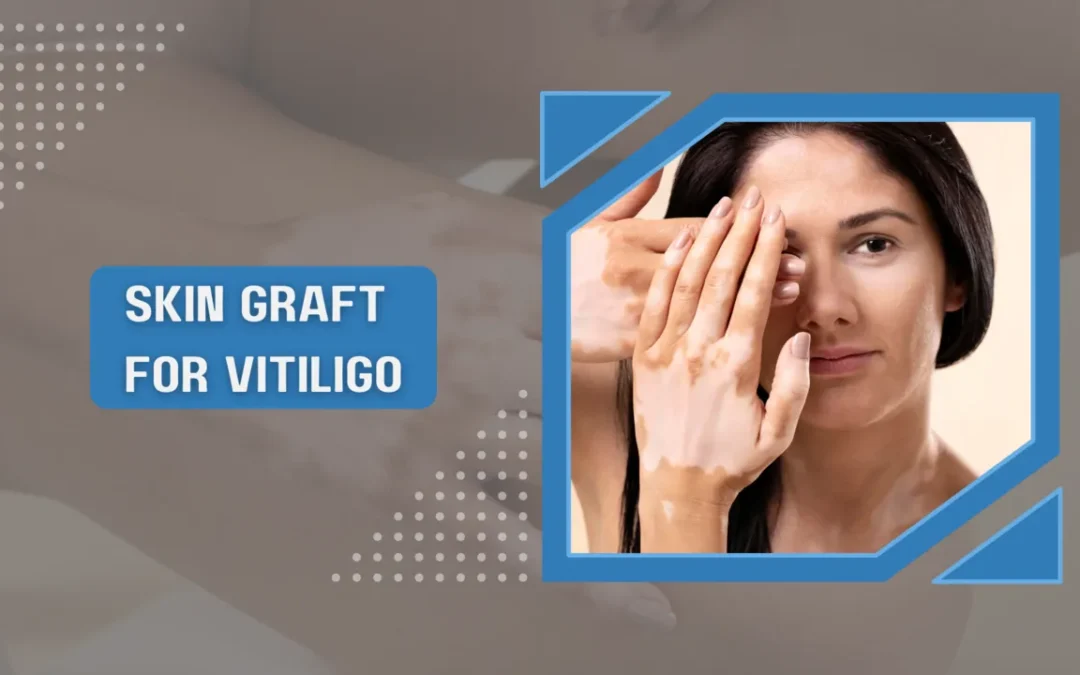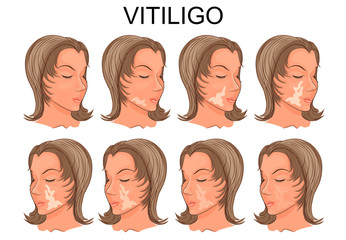
Skin graft for vitiligo is a medical treatment that transfers skin from one part of the body to another. This technique is particularly useful in treating vitiligo, where patches of skin lose their pigment. By grafting skin with normal melanocyte cells onto depigmented areas, patients can see improvements in skin color and overall appearance.
Dr. Archit Aggarwal, with over 11 years of experience, is a leading dermatologist in Faridabad. His dedication and innovative approach have restored the confidence of countless patients, making him a respected professional in dermatology. He specializes in skin grafting, pigmentation, and vitiligo treatments.
Curious about the effectiveness of these treatments? What if you could see real improvement in your skin tone?
Can Skin Graft Cure Vitiligo?
Dr. Archit Aggarwal suggests, that “It’s important to understand that while skin grafting can significantly improve the appearance of the skin, it is not a complete cure for vitiliginous conditions”. “The success of skin grafting largely depends on how well the new skin adapts and grows in the new location, which varies from person to person”, he added.
The procedure shows promise in restoring color to the affected areas, but the results can be different for each individual. Factors such as the size of the vitiligo patches, their location, and the patient’s overall health affect the outcome. Additionally, even after a successful graft, there is a chance that vitiligo might reappear on the grafted skin or develop in new areas. Therefore, while skin grafting is a beneficial option for managing the symptoms and appearance of vitiligo, it should not be considered a definitive cure.
Ready to take the next step towards managing your vitiligo? Schedule a consultation with a skilled dermatologist today for personalized treatment insights.
Imagine a more uniform skin tone after treatment. Isn’t it time to explore your options?
The Skin Grafting Procedure
The skin graft for vitiligo involves several steps, each crucial to ensure the best outcome:
- Preparation: Both the donor site (where the skin is taken from) and the recipient site (where the skin will be placed) are cleaned and prepared.
- Harvesting: Skin is carefully removed from the donor site. This can be done through different methods such as punch grafts or split-thickness grafts, depending on the amount of skin needed.
- Transplantation: The harvested skin is then meticulously placed on the vitiligo-affected area.
- Securing the Graft: The graft is secured with dressings or stitches to keep it in place during the initial healing phase.
- Monitoring and Aftercare: Post-surgical care is critical. The patient will need to follow specific instructions for wound care to prevent infection and ensure proper healing.
- Follow-up: Regular follow-ups with the dermatologist are necessary to monitor the healing process and evaluate the success of the graft.
Feeling overwhelmed by the idea of a procedure? What if it could bring back your confidence?
What Are the Stages of Skin Graft Healing?
The healing process after a skin graft can be broken down into stages which are as follows:
- Hemostasis and Inflammation: Immediately following surgery, the body works to stop bleeding and fight infection.
- Proliferative Phase: New tissue begins to form over the graft, integrating it with surrounding tissues.
- Maturation and Remodeling: The graft matures and adjusts to the contours and color of the surrounding skin, which can take several months.
Looking to address your vitiligo? Consult an expert dermatologist to learn more about your options.
Considering treatment for your vitiligo? What if there were other proven, effective methods to improve your skin’s appearance?
Treatment Options for Vitiligo Other Than Skin Graft
Blister Grafting: Blister grafting involves creating blisters on the pigmented skin using suction. The top part of the blister is then removed and transplanted to a vitiligo-affected area. This technique is relatively simple and can be effective for small patches of vitiligo.
Micropigmentation: Micropigmentation, also known as tattooing, involves implanting pigment into the skin using a special needle. This technique can be useful for small areas, especially around the lips and eyes, to match the skin color more closely.
Cellular Grafting: Cellular grafting involves transplanting melanocytes (pigment-producing cells) from normal skin to the vitiligo-affected areas. This method can be effective for repigmenting larger areas and is usually done in specialized centers.
Punch Grafting: Punch grafting involves taking small circular pieces of pigmented skin and transplanting them into the depigmented areas. This technique can be used for larger areas and can result in a more even skin tone.
Ready to see the difference? Let’s conclude this blog and see what we’ve covered so far!
Conclusion
Skin grafting for vitiligo is a testament to how far dermatological treatments have come. Patients can see significant improvements in their skin’s appearance, which can enhance their quality of life and boost their self-esteem.
Dr. Aggarwal and the team at the KDC clinic are committed to providing patients with the highest level of care, utilizing cutting-edge techniques in skin grafting to achieve the best outcomes.
FAQs
Is Vitiligo Surgery Painful ?
Vitiligo surgery, including skin grafts, is generally performed under local anesthesia, minimizing any discomfort during the procedure. Post-operative pain is manageable with prescribed medications.
Are Skin Grafts Permanent ?
Skin grafts are permanent; however, their success can depend on factors like the body’s acceptance of the graft and post-operative care.
What Helps Skin Grafts Heal Faster ?
Keeping the grafted area clean, avoiding direct sunlight, and following your dermatologist’s instructions are crucial for quick and effective healing.


